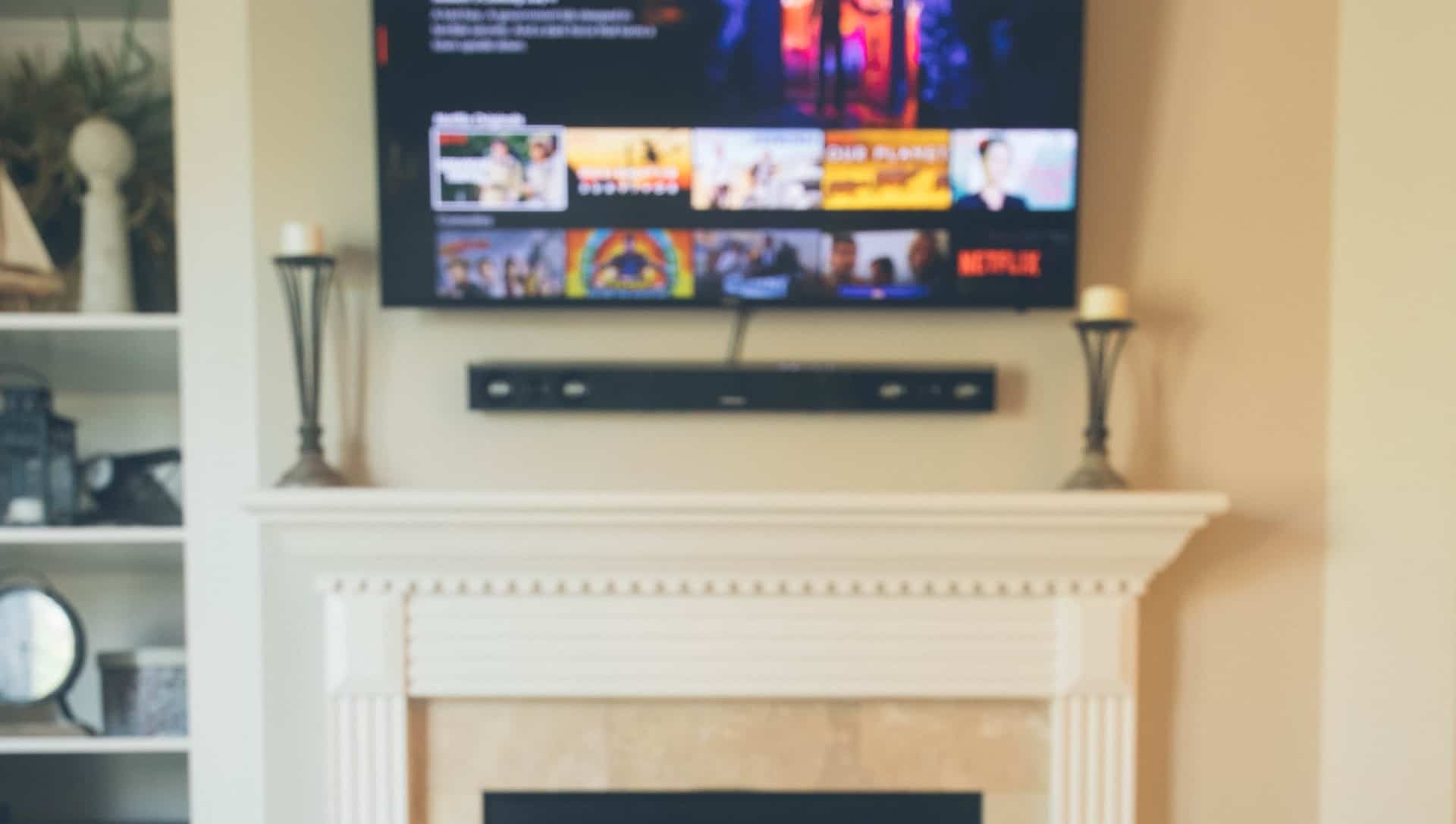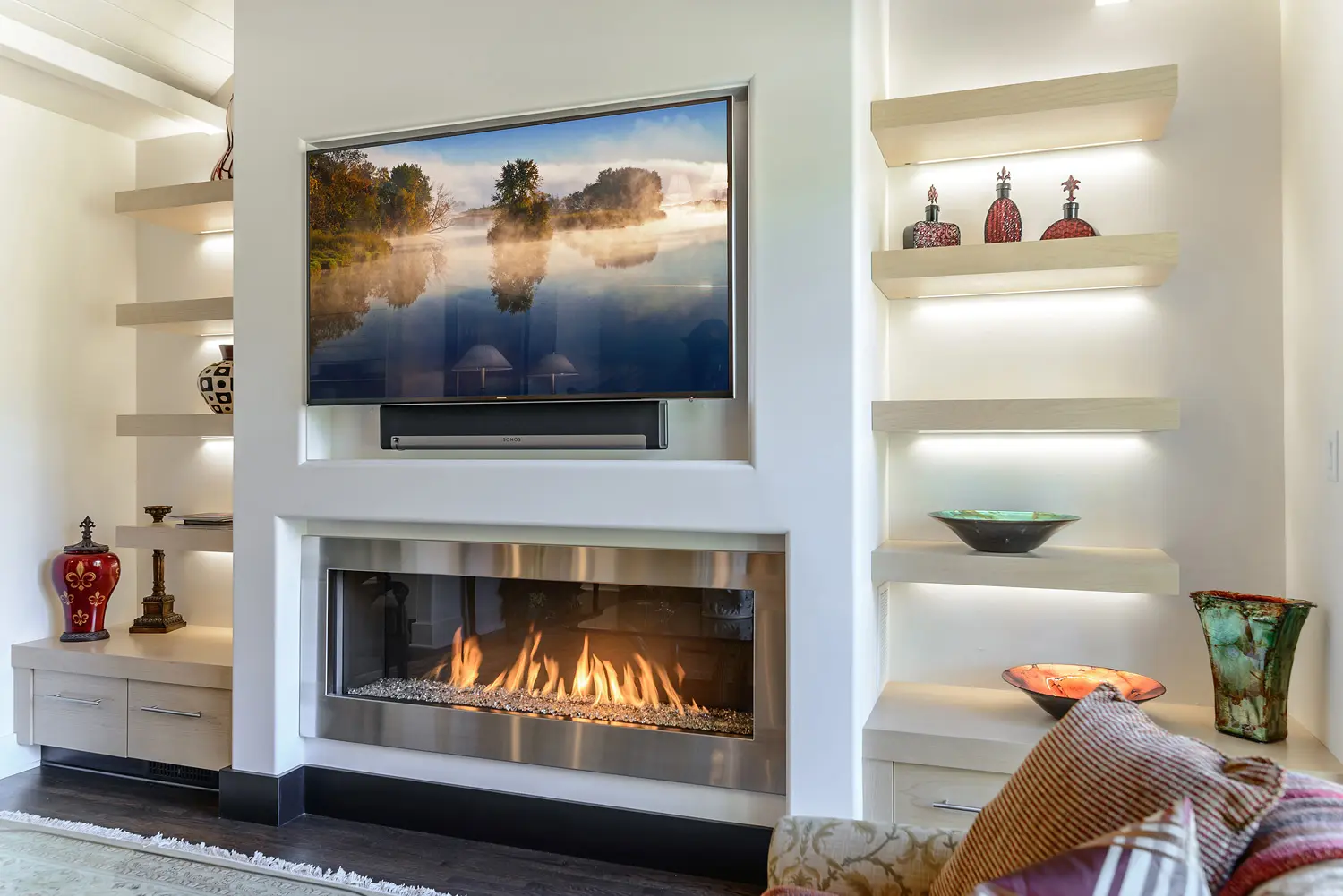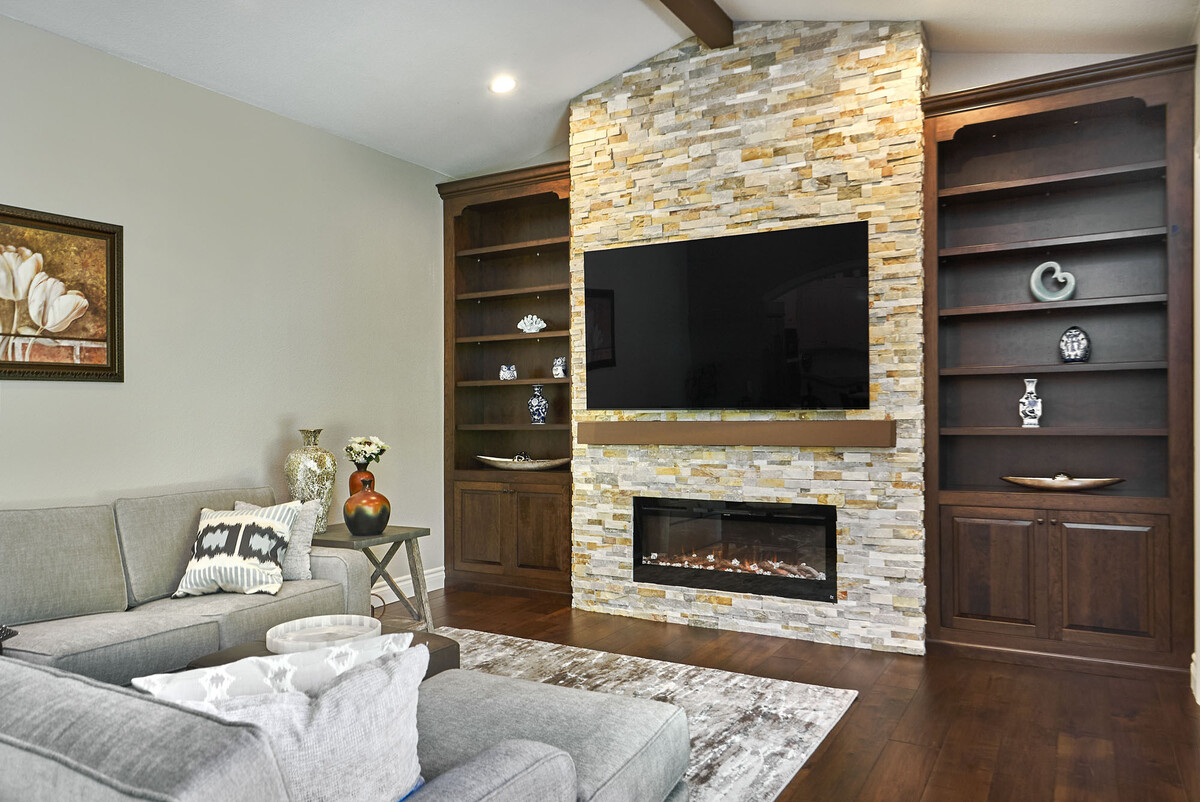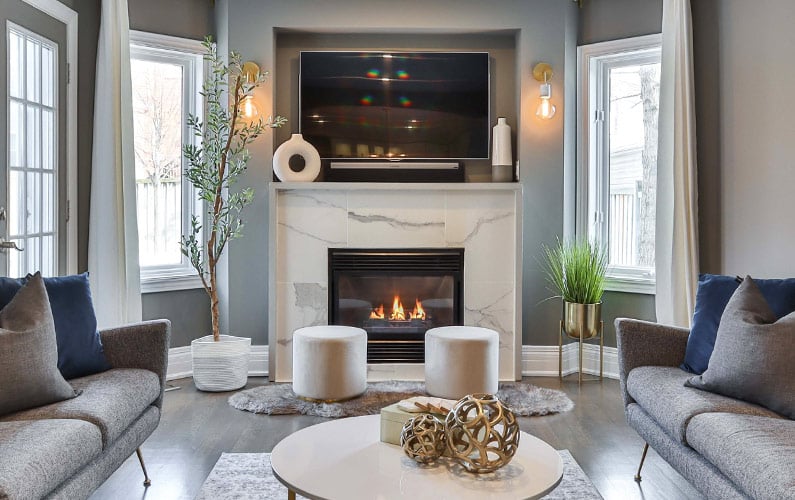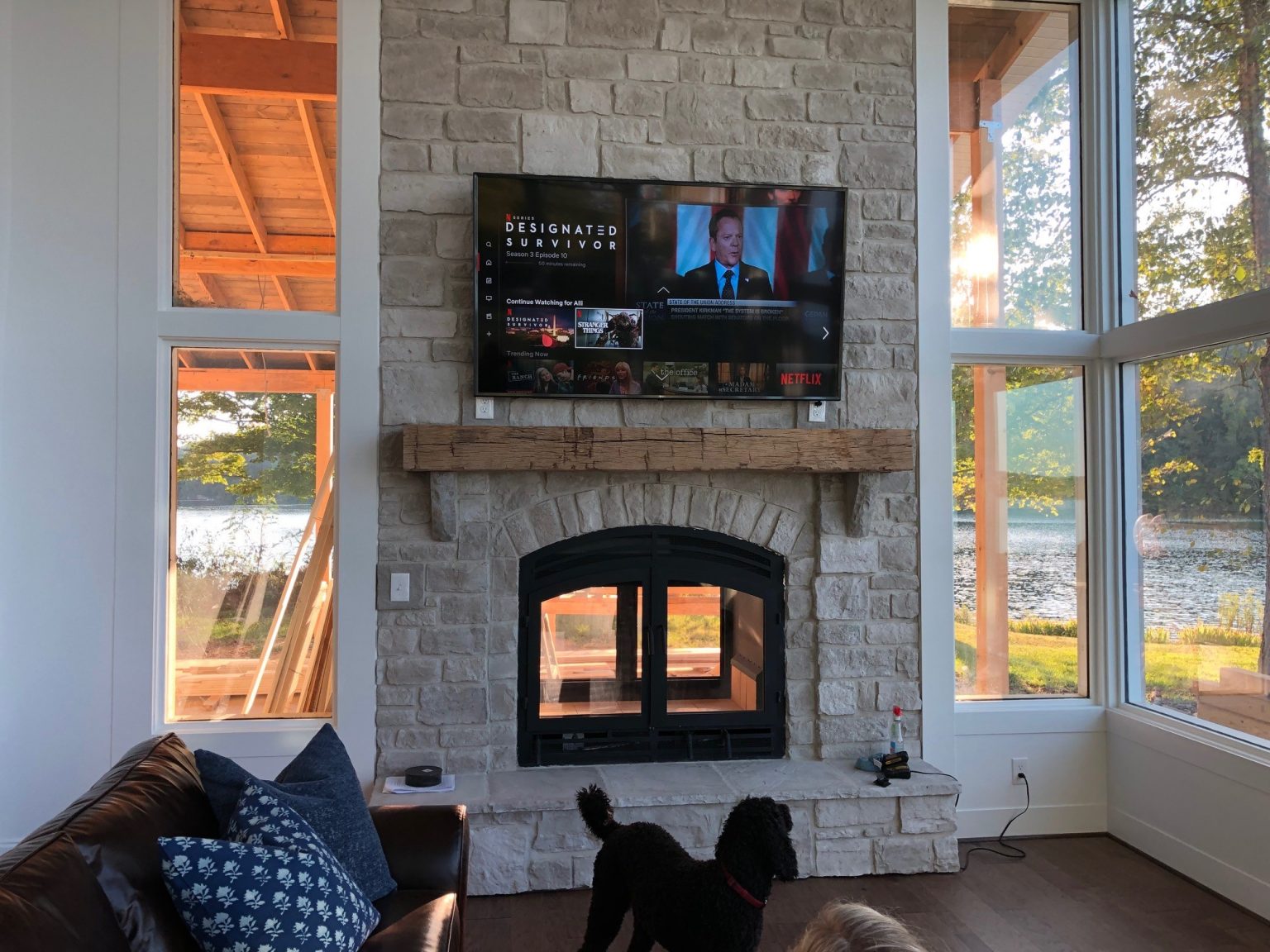How To Mount Tv Over Fireplace
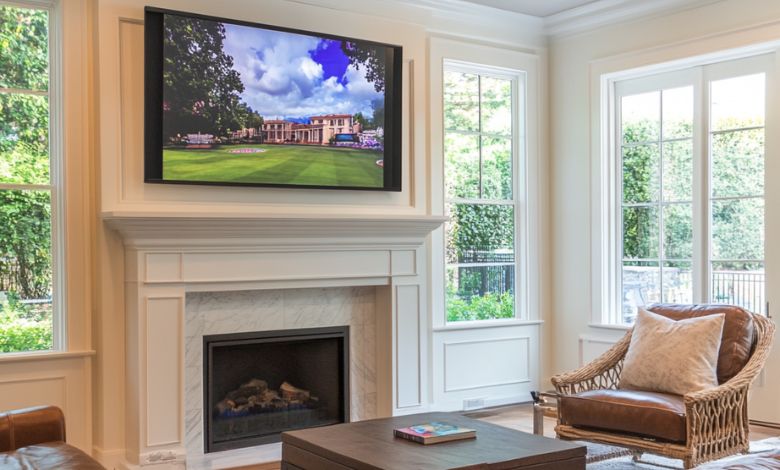
How to Mount a TV Over a Fireplace: A Comprehensive Guide
Mounting a TV over a fireplace has become an increasingly popular design trend, offering a visually appealing focal point in many homes. However, before you drill a single hole, it's crucial to understand the potential challenges and considerations involved. This guide will walk you through the pros and cons, essential steps, and alternative solutions to ensure a safe and enjoyable setup.
Pros and Cons of Mounting a TV Over a Fireplace
Pros:
- Space Saving: Ideal for smaller rooms where wall space is limited.
- Aesthetic Appeal: Creates a modern and streamlined look.
- Focal Point: Combines two common focal points (fireplace and TV) into one.
Cons:
- Heat Exposure: Heat rising from the fireplace can damage the TV's internal components over time. Excessive heat can shorten the lifespan of your television.
- Neck Strain: The high viewing angle can cause discomfort, especially during prolonged viewing sessions.
- Cable Management: Hiding cables can be challenging and may require professional installation.
- Fireplace Usage: Using the fireplace frequently can exacerbate the heat issue. Gas fireplaces, in particular, can produce significant radiant heat.
Essential Considerations Before You Begin
Assessing Your Fireplace
Type of Fireplace:
- Gas Fireplace: Produces more radiant heat than electric fireplaces. Requires careful heat shielding measures.
- Wood-Burning Fireplace: Generates the most heat and soot, making it the riskiest option.
- Electric Fireplace: Generates the least heat, making it the safest option for mounting a TV above. However, even electric fireplaces can produce enough heat to cause damage over time.
Fireplace Mantle:
- A protruding mantle can deflect some of the heat away from the TV. The deeper the mantle, the better the heat protection.
- Consider installing a custom-built mantle or extending an existing one for enhanced protection.
Measuring the Viewing Angle
To minimize neck strain, determine the optimal viewing angle. Ideally, the center of the TV screen should be at or slightly below eye level when you are seated. Use a measuring tape and a level to determine the appropriate height for your TV mount.
Formula for Optimal Viewing Distance: Screen size (diagonal inches) x 1.5 to 2.5
Heat Shielding Solutions
Even with an electric fireplace, consider implementing heat shielding measures to prolong the life of your TV.
- Heat Shield: Install a metal or ceramic heat shield above the fireplace opening to deflect heat upwards and away from the TV.
- Insulation: Insulate the wall cavity behind the TV with fire-resistant insulation.
- Ventilation: Ensure adequate ventilation around the TV to allow heat to dissipate.
Step-by-Step Mounting Guide
Tools and Materials
- TV Mount (tilting or full-motion recommended)
- Drill with appropriate drill bits (masonry bit for brick or stone fireplaces)
- Stud finder (if mounting to a framed wall above the fireplace)
- Level
- Measuring tape
- Pencil
- Safety glasses
- Gloves
- Cable management system (cable concealer, wire ties)
- Heat shield (optional)
Step 1: Preparation
Turn off the power to the fireplace and TV. Gather all necessary tools and materials. Read the TV mount instructions carefully.
Step 2: Locating Studs (if applicable)
If mounting to a framed wall above the fireplace, use a stud finder to locate the studs. Mark the stud locations with a pencil. If you are mounting directly to brick or stone, skip this step.
Step 3: Mounting the TV Bracket
Attach the TV bracket to the back of the TV according to the manufacturer's instructions. Ensure the bracket is securely fastened.
Step 4: Marking and Drilling Mounting Holes
Position the TV mount on the wall at the desired height. Use a level to ensure it is straight. Mark the locations of the mounting holes with a pencil. Drill pilot holes into the wall. For brick or stone, use a masonry bit.
Step 5: Attaching the Wall Mount
Attach the wall mount to the wall using appropriate screws or anchors. Ensure the mount is securely fastened. Use a level to double-check that it is straight.
Step 6: Mounting the TV
Carefully lift the TV and attach it to the wall mount. Ensure the TV is securely locked into place.
Step 7: Cable Management
Run the cables (power, HDMI, etc.) through a cable concealer or use wire ties to keep them organized and hidden. Consider using in-wall cable management solutions for a cleaner look. Keep cables away from direct heat sources.
Step 8: Testing and Adjustments
Turn on the TV and test all connections. Adjust the TV angle as needed to ensure optimal viewing.
Alternative Solutions
If you are concerned about heat exposure or viewing angle, consider these alternative solutions:
- Mounting the TV to the Side: Position the TV on a separate wall adjacent to the fireplace.
- Using a TV Lift Cabinet: A TV lift cabinet conceals the TV when not in use and raises it to the desired viewing height.
- Lowering TV Mount: A specialized mount that allows you to pull the TV down to a lower viewing height when in use and raise it back up when not. These are often called "down and out" mounts.
Popular TV Mount Brands and Models
Here are a few popular TV mount brands and models to consider:
- Sanus: Known for their high-quality and durable mounts. Offers a wide range of options, including tilting, full-motion, and fixed mounts.
- Mount-It!: Provides affordable and reliable mounts. Offers a variety of options, including mounts designed specifically for fireplaces.
- Echogear: Offers innovative mounts with features like cable management and easy installation.
Pricing and Installation Costs
The cost of mounting a TV over a fireplace can vary depending on the complexity of the installation and the type of mount you choose. A basic tilting mount can cost as little as $30, while a full-motion mount can cost upwards of $150. Professional installation can range from $100 to $500, depending on the complexity of the project.
Maintenance Needs
Regularly inspect the TV mount for any signs of wear or damage. Tighten any loose screws or bolts. Clean the TV screen and surrounding area to remove dust and debris. Monitor the TV's temperature and adjust fireplace usage as needed to prevent overheating.
Warranty Information
Most TV mounts come with a limited warranty that covers defects in materials and workmanship. The warranty period typically ranges from one to five years. Refer to the manufacturer's warranty documentation for specific details.
HVAC System Considerations
While this guide focuses on TV mounting, it's important to remember the impact of fireplace usage on your HVAC system. A wood-burning fireplace can significantly impact indoor air quality, potentially requiring more frequent filter changes and duct cleaning. A gas fireplace, while cleaner burning, can still contribute to increased humidity levels. Consider a whole-house humidifier or dehumidifier to maintain optimal indoor humidity, especially if you use your fireplace frequently. Consult with an HVAC professional to ensure your system is properly sized and maintained for your specific needs.
Always prioritize safety when working with electricity and power tools. If you are not comfortable performing the installation yourself, hire a qualified professional.

